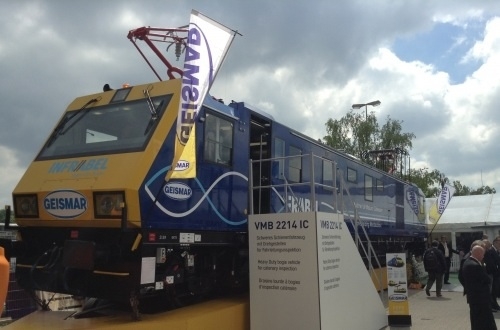The unit on display is one of three ordered by Infrabel, but unlike the other two which are used for ETCS diagnostics, the new machine will be used to monitor the height and condition of overhead electrification on 3kV main and 25kV high-speed lines.
Approximately 80% of Infrabel's overhead infrastructure uses square cables, and while a plan is in place to replace these with round cables in the next 20 years, the vehicle will be used to measure the condition of both types of cable to an accuracy of 0.2mm.
The vehicle operates at a maximum speed of 40-45km/h during testing and up to 120km/h at other times. The machine uses one powered bogie which was especially developed for the Infrabel project and Geismar says could now be marketed to other prospective clients.
Mr Benoit de Connick, who is leading the catenary measurement programme for Infrabel, told IRJ that the infrastructure manager previously carried out manual inspections but due to time constraints and dangers to personnel it was decided to switch to a measurement vehicle system. He says inspections will take place between 22.00 and 06.00 five nights a week with the aim of inspecting the entire network over the course of a year.
The vehicle was developed by Geismar's Italian subsidiary, Donelli, and uses the same bodyshell as the ETCS test vehicle. It features a glass dome in the roof which gives the driver and operator an improved view of the catenary while operating the vehicle from an additional driving position in the centre of the unit.
Following successful tests in Italy, where the vehicle was reached 140km/h, it is set to be tested on the Belgian network in July and August ahead of deployment by the end of the year or in early 2014.

